-
 Bitcoin
Bitcoin $84,123.7119
1.29% -
 Ethereum
Ethereum $1,824.8439
0.75% -
 Tether USDt
Tether USDt $0.9997
0.01% -
 XRP
XRP $2.1361
3.85% -
 BNB
BNB $598.3323
1.01% -
 Solana
Solana $122.3265
5.60% -
 USDC
USDC $1.0001
0.01% -
 Dogecoin
Dogecoin $0.1714
5.64% -
 Cardano
Cardano $0.6664
2.54% -
 TRON
TRON $0.2386
-0.03% -
 Chainlink
Chainlink $13.0133
1.54% -
 UNUS SED LEO
UNUS SED LEO $9.1926
-2.61% -
 Toncoin
Toncoin $3.4025
-3.65% -
 Stellar
Stellar $0.2607
0.40% -
 Avalanche
Avalanche $18.3135
0.87% -
 Sui
Sui $2.2724
1.94% -
 Shiba Inu
Shiba Inu $0.0...01240
2.02% -
 Hedera
Hedera $0.1649
1.25% -
 Litecoin
Litecoin $84.6845
1.62% -
 Polkadot
Polkadot $4.0598
1.03% -
 MANTRA
MANTRA $6.2869
-1.57% -
 Bitcoin Cash
Bitcoin Cash $302.8642
0.26% -
 Bitget Token
Bitget Token $4.5347
0.70% -
 Dai
Dai $1.0001
0.01% -
 Ethena USDe
Ethena USDe $0.9991
-0.04% -
 Hyperliquid
Hyperliquid $12.1319
1.65% -
 Monero
Monero $217.1102
1.51% -
 Uniswap
Uniswap $5.9265
1.27% -
 Pi
Pi $0.5024
-8.47% -
 Pepe
Pepe $0.0...07314
8.36%
How to use candlestick charts to optimize cryptocurrency position management?
Candlestick charts are vital for crypto trading, showing price movements and key patterns like bullish and bearish engulfing, aiding in entry/exit strategies and risk management.
Mar 31, 2025 at 05:49 am
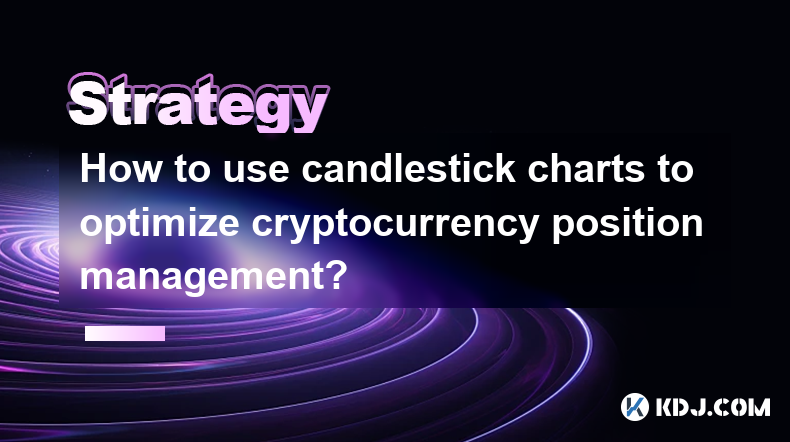
Understanding Candlestick Charts in Crypto Trading
Candlestick charts are a powerful visual tool used in technical analysis to represent price movements of cryptocurrencies over specific time periods. Each candle represents a timeframe (e.g., 1-minute, 1-hour, 1-day), showing the open, high, low, and closing prices. Understanding these elements is crucial for interpreting market sentiment and making informed trading decisions. The body of the candle indicates the price range between the open and close, while the wicks (shadows) extend to the high and low prices reached during that period. Green (or white) candles usually signify a closing price higher than the opening price (bullish), while red (or black) candles indicate a closing price lower than the opening price (bearish).
Identifying Key Candlestick Patterns
Many candlestick patterns offer insights into potential price reversals or continuations. Recognizing these patterns can significantly improve position management. For instance, a bullish engulfing pattern suggests a potential price increase, while a bearish engulfing pattern hints at a potential price decrease. Other important patterns include hammer, inverted hammer, shooting star, and doji. These patterns, when combined with other technical indicators, can help traders anticipate market shifts and adjust their positions accordingly. It's crucial to remember that these patterns are not foolproof and should be used in conjunction with other forms of analysis.
Using Candlestick Charts for Entry and Exit Strategies
Candlestick charts play a pivotal role in defining entry and exit points for cryptocurrency positions. For example, a bullish engulfing pattern appearing after a downtrend might signal a potential entry point for a long position (buying). Conversely, a bearish engulfing pattern after an uptrend could indicate a potential exit point for a long position or an entry point for a short position (selling). However, confirming these signals with other technical indicators, such as moving averages or volume analysis, is essential to reduce the risk of false signals. Always consider your risk tolerance and implement appropriate stop-loss orders to manage potential losses.
Integrating Candlestick Charts with Other Technical Indicators
While candlestick charts provide valuable visual information, combining them with other technical indicators enhances accuracy and reduces reliance on individual pattern interpretation. For example, integrating candlestick patterns with moving averages (like the 20-day and 50-day moving averages) can help confirm trend direction and identify potential support and resistance levels. Similarly, using relative strength index (RSI) or moving average convergence divergence (MACD) can provide additional confirmation of bullish or bearish momentum signaled by candlestick patterns. This combined approach strengthens your decision-making process.
Step-by-Step Guide to Optimizing Position Management with Candlesticks
Here's a step-by-step approach to leverage candlestick charts for better position management:
Step 1: Choose a Timeframe: Select a timeframe appropriate for your trading style. Scalpers might use 1-minute or 5-minute charts, while swing traders might prefer daily or weekly charts.
Step 2: Identify Key Levels: Identify support and resistance levels using candlestick patterns and horizontal lines. These levels often indicate potential price reversals.
Step 3: Recognize Candlestick Patterns: Learn to identify common bullish and bearish reversal and continuation patterns.
Step 4: Incorporate Indicators: Combine candlestick analysis with other indicators like moving averages, RSI, or MACD to confirm signals.
Step 5: Define Entry and Exit Points: Use candlestick patterns and indicators to determine optimal entry and exit points for your positions.
Step 6: Implement Risk Management: Always use stop-loss orders to limit potential losses and take-profit orders to secure profits.
Step 7: Backtest Your Strategy: Before implementing any strategy using live funds, backtest it using historical data to evaluate its effectiveness.
Step 8: Adapt and Learn: Continuously monitor market conditions and adjust your strategy as needed. The cryptocurrency market is dynamic, and continuous learning is crucial.
Managing Position Size with Candlestick Insights
Effective position sizing is crucial for risk management. Candlestick charts can indirectly help determine appropriate position sizes by providing insights into market volatility. During periods of high volatility (indicated by large candlestick bodies and long wicks), reducing position size can mitigate potential losses. Conversely, during periods of low volatility (small candlestick bodies and short wicks), you might consider slightly larger positions, but always within your risk tolerance. Remember, never risk more than you can afford to lose.
The Importance of Risk Management in Cryptocurrency Trading
Risk management is paramount in cryptocurrency trading, and candlestick charts contribute to this process. By identifying potential reversal patterns and combining this with other technical indicators, you can set appropriate stop-loss orders. These orders automatically sell your position when the price reaches a predetermined level, limiting potential losses. Similarly, take-profit orders can be used to secure profits when the price reaches a target level. Always remember that no strategy is foolproof, and losses are inevitable in trading. Proper risk management is crucial for long-term success.
Frequently Asked Questions
Q: Are candlestick charts reliable for cryptocurrency trading?
A: Candlestick charts are a valuable tool, but not a crystal ball. They provide visual representations of price action, but should be used in conjunction with other analysis methods and risk management strategies. They are more effective when combined with other technical indicators and fundamental analysis.
Q: How do I choose the right timeframe for candlestick charts?
A: The best timeframe depends on your trading style. Scalpers use shorter timeframes (1-minute, 5-minute), while swing traders prefer longer timeframes (daily, weekly). Experiment to find what suits your approach.
Q: Can candlestick patterns predict the future with certainty?
A: No, candlestick patterns are not foolproof predictors of future price movements. They indicate potential scenarios, but should never be the sole basis for trading decisions. Confirmation from other indicators and risk management are essential.
Q: What are some common mistakes to avoid when using candlestick charts?
A: Over-reliance on single patterns, ignoring volume, neglecting risk management, and failing to combine candlestick analysis with other technical indicators are all common mistakes.
Q: How can I improve my candlestick chart interpretation skills?
A: Practice, study, and backtesting are key. Analyze historical charts, learn to identify patterns, and test your strategies on simulated trading platforms before using real funds. Continuous learning and adaptation are essential.
Disclaimer:info@kdj.com
The information provided is not trading advice. kdj.com does not assume any responsibility for any investments made based on the information provided in this article. Cryptocurrencies are highly volatile and it is highly recommended that you invest with caution after thorough research!
If you believe that the content used on this website infringes your copyright, please contact us immediately (info@kdj.com) and we will delete it promptly.
- Shibarium Blockchain Breaks New Ground by Surpassing 1 Billion Transactions
- 2025-04-05 09:30:12
- FDUSD Depegged by 11% Following Insolvency Rumors
- 2025-04-05 09:30:12
- Fintech security company ATON announced on the 3rd that it has successfully established and officially opened a response system for NH Nonghyup Bank's real transaction testing of Central Bank digital currency.
- 2025-04-05 09:25:12
- Bybit Ordered to Take Down All Digital Platforms in Malaysia Within 14 Working Days
- 2025-04-05 09:25:12
- Bitcoin (BTC) Faces Growing Concerns of a Potential Price Correction After Notable Increase in Exchange Inflows
- 2025-04-05 09:20:12
- BlackRock Launches iShares Bitcoin ETP in Europe, Signaling Growing Institutional Interest in Bitcoin
- 2025-04-05 09:20:12
Related knowledge
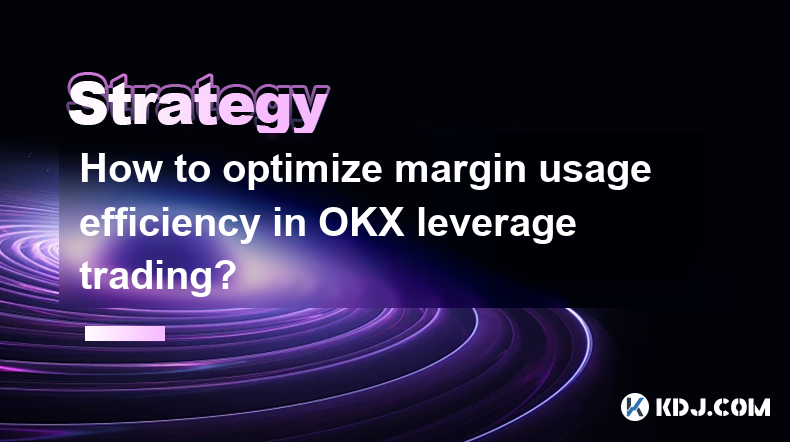
How to optimize margin usage efficiency in OKX leverage trading?
Apr 04,2025 at 03:21pm
Margin usage efficiency is a critical aspect of leverage trading on platforms like OKX, where traders aim to maximize their returns while managing risk. Understanding how to optimize margin usage can significantly enhance your trading performance. This article will delve into various strategies and techniques to help you make the most out of your margin...
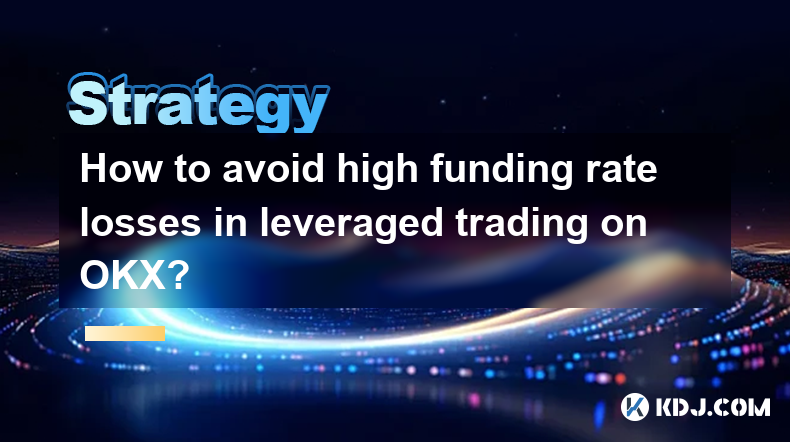
How to avoid high funding rate losses in leveraged trading on OKX?
Apr 04,2025 at 05:28pm
Understanding Funding Rates in Leveraged Trading on OKXFunding rates are a critical component of leveraged trading on platforms like OKX. They represent the periodic payments made between traders to maintain the balance between the futures price and the spot price of the underlying asset. When trading with leverage, understanding and managing funding ra...
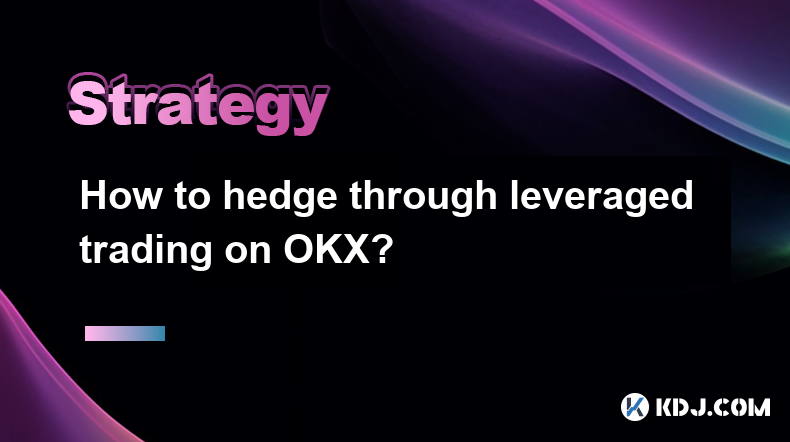
How to hedge through leveraged trading on OKX?
Apr 04,2025 at 01:42pm
Hedging through leveraged trading on OKX can be an effective strategy for managing risk in the volatile cryptocurrency market. This article will guide you through the process of setting up and executing a hedging strategy using OKX's leveraged trading features. We will cover the basics of leveraged trading, how to set up a hedge, and the steps to execut...
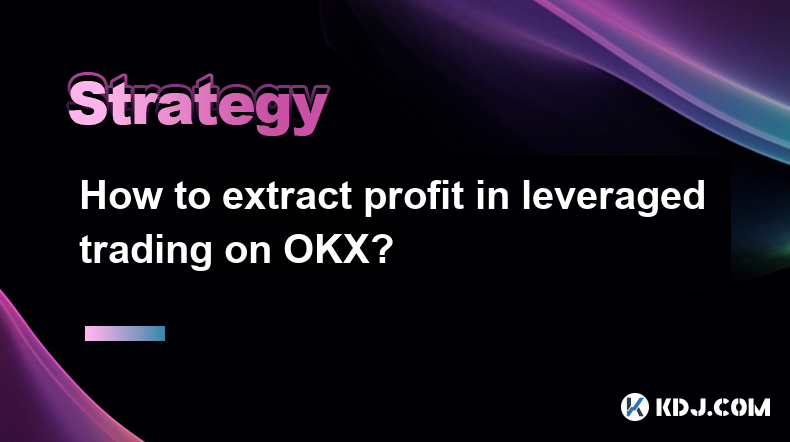
How to extract profit in leveraged trading on OKX?
Apr 04,2025 at 05:42am
Leveraged trading on OKX can be a powerful tool for traders looking to amplify their potential profits. However, it also comes with increased risk, making it essential to understand how to effectively extract profit from these trades. This article will guide you through the process of leveraging OKX's platform to maximize your gains while managing the i...
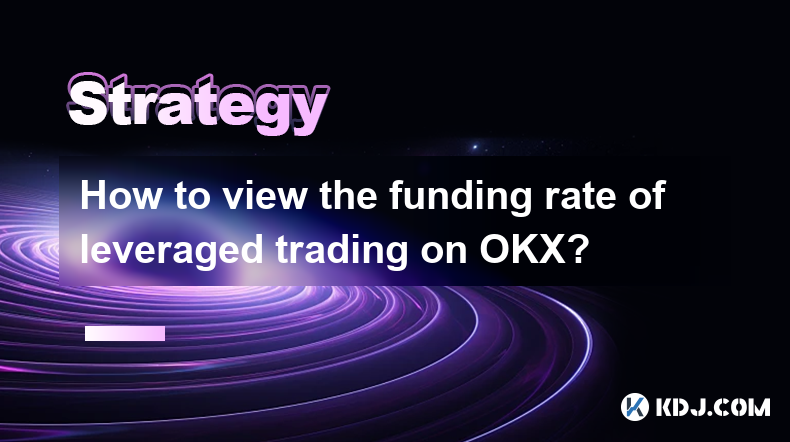
How to view the funding rate of leveraged trading on OKX?
Apr 04,2025 at 07:07am
Understanding the funding rate is crucial for anyone involved in leveraged trading on OKX. The funding rate is a mechanism used in perpetual futures contracts to ensure that the market price of the futures remains closely aligned with the spot price of the underlying asset. This article will guide you through the process of viewing the funding rate on O...
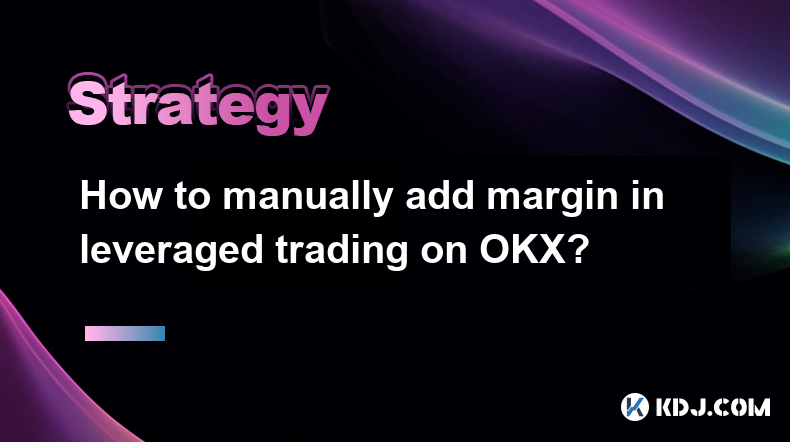
How to manually add margin in leveraged trading on OKX?
Apr 04,2025 at 05:21pm
Introduction to Margin in Leveraged Trading on OKXLeveraged trading on OKX allows traders to amplify their trading positions by borrowing funds from the platform. Margin is the amount of funds required to open and maintain these leveraged positions. Understanding how to manually add margin is crucial for managing your trades effectively and avoiding liq...

How to optimize margin usage efficiency in OKX leverage trading?
Apr 04,2025 at 03:21pm
Margin usage efficiency is a critical aspect of leverage trading on platforms like OKX, where traders aim to maximize their returns while managing risk. Understanding how to optimize margin usage can significantly enhance your trading performance. This article will delve into various strategies and techniques to help you make the most out of your margin...

How to avoid high funding rate losses in leveraged trading on OKX?
Apr 04,2025 at 05:28pm
Understanding Funding Rates in Leveraged Trading on OKXFunding rates are a critical component of leveraged trading on platforms like OKX. They represent the periodic payments made between traders to maintain the balance between the futures price and the spot price of the underlying asset. When trading with leverage, understanding and managing funding ra...

How to hedge through leveraged trading on OKX?
Apr 04,2025 at 01:42pm
Hedging through leveraged trading on OKX can be an effective strategy for managing risk in the volatile cryptocurrency market. This article will guide you through the process of setting up and executing a hedging strategy using OKX's leveraged trading features. We will cover the basics of leveraged trading, how to set up a hedge, and the steps to execut...

How to extract profit in leveraged trading on OKX?
Apr 04,2025 at 05:42am
Leveraged trading on OKX can be a powerful tool for traders looking to amplify their potential profits. However, it also comes with increased risk, making it essential to understand how to effectively extract profit from these trades. This article will guide you through the process of leveraging OKX's platform to maximize your gains while managing the i...

How to view the funding rate of leveraged trading on OKX?
Apr 04,2025 at 07:07am
Understanding the funding rate is crucial for anyone involved in leveraged trading on OKX. The funding rate is a mechanism used in perpetual futures contracts to ensure that the market price of the futures remains closely aligned with the spot price of the underlying asset. This article will guide you through the process of viewing the funding rate on O...

How to manually add margin in leveraged trading on OKX?
Apr 04,2025 at 05:21pm
Introduction to Margin in Leveraged Trading on OKXLeveraged trading on OKX allows traders to amplify their trading positions by borrowing funds from the platform. Margin is the amount of funds required to open and maintain these leveraged positions. Understanding how to manually add margin is crucial for managing your trades effectively and avoiding liq...
See all articles





















































































